There is somewhat of a controversy about whether shooting files in RAW is preferable to JPEG (also can be JPG). You are probably familiar with the JPEG file format, but you may still be a little fuzzy over what RAW is and why it may be helpful to you. This article will hopefully explain how these file formats work and help you to decide which one is right for you.
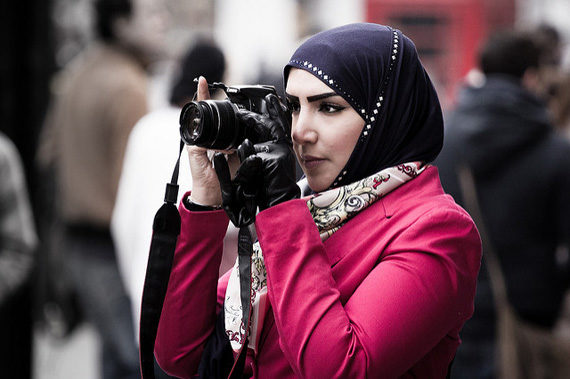
photo by Hernán Piñera.
JPEG vs RAW
JPEG is the recognized file format for photographs, plain and simple. If you will be uploading to the web or printing your images, JPEG is the way you will most likely send those photos.
However, the definition of JPEG lends itself to some questions about the integrity of those image files. The JPEG format is described as “the most common image compression format used by digital cameras. And more technically, a method of “lossy compression” for photographic images. It is this idea of “compression” that is the problem which causes the discussion about whether to use this format when taking pictures and storing them on your computer.
The “lossy compression” is what happens in your camera when a picture is taken in JPEG format. Essentially, the camera is programmed to compress the pixels into a smaller file size, discarding some of those pixels. Depending on what setting you have selected for recording your camera images, there will be more or less compression. For instance, if you choose the largest file size you can for shooting, your camera will discard less information than if you choose a smaller setting.
So, let’s say you want to take as many pictures as possible on your storage card. The most logical setting is to pick the smallest available picture size, and let’s assume that it is 640 x 480, when the camera is capable of taking a full size photo at 3648 x 2736 (this is possible with a 10-megapixel camera). The camera “throws away” all those extra pixels. What you see on the LCD is the same as if you took the picture at full size, but when you try to enlarge that photo to print is at, say, 5 x 7, the quality will be unacceptable. You will see blotchy parts in the picture that we lovingly refer to as “pixelization.”
Then when you further process that image on your computer using some sort of image processing software like Photoshop, it is compressed even more each time you save the image. Most people do not save and resave their images, but it can be a problem if you do.
How does the RAW format differ from JPEG?
When you set your camera to RAW in the photo quality menu, you are telling the camera NOT to process the photo in any way. It will preserve all the pixels in the image. Pretty simple, right?
The resulting file is much, much larger than a JPEG file, even when the camera is set to JPEG (fine), meaning the largest JPEG image possible.
The next issue is that you must do something with that photo before you print it or post it to the web. In other words, you have to process the photo on your computer. A RAW file is somewhat like an old film negative (not really, but you can think of it in those terms to get some idea of how this works). In order to see get a print from a negative, the negative must be processed. The same is true with RAW files. You will need some kind of processing software to convert your photograph into a usable file for either print or uploading.
Another major difference when dealing with RAW is that you can’t use any of the creative modes on your digital camera. Yes, you can use the manual settings for aperture and shutter speed, but if you set your camera to a setting like “party”, you essentially cancel the RAW mode and automatically go into JPEG mode.
Bottom line: Shooting in RAW format gives you a full set of pixels to work with, but you have to do some processing.
What is the controversy?
Some photographers are strong proponents of RAW while others are fans of JPEG.
First of all, not every camera is capable of taking RAW format pictures. If you are the owner of a compact digital (point and shoot) camera, you may not have the option to go RAW.
Those who support shooting RAW want to be able to use every resource available for getting the best possible image outcome. Their claim is that using the RAW format gives them total control over their images.
Others, and we are talking professional here, have resisted the change and continue to use the JPEG format. Their reasoning is mostly that they are confident in their skills, and they always get good results with JPEG. Adding RAW simply increases their workflow, taking time away from their first love, which is taking pictures. Why would they want to spend more time at the computer to get what they are already getting out of the camera?
Another reason for not using the RAW format is file size. The file size, as mentioned above, is more than twice that of JPEG photos. They will fill up your storage card very quickly in comparison. And they will also take up much more room on your hard drive.
The last reason for sticking with JPEG is that RAW formats are proprietary to individual cameras. What that means is that there is no standard way to produce these files. If you are using a Canon, your files are different than if you use a Nikon. The RAW extension is even different. Canon is a.CR2 and Nikon is a.NEF extension. And what complicates this even more is that as newer DSLR cameras are produced, this file format changes. Older versions of image processing programs are not always able to read the files of newer cameras.
Ken Rockwell of KenRockwell.com is a strong opponent of using the RAW format. He claims that in the future, as software advances along with the newer file formats, older RAW files will become defunct, and you will not be able to open those older files without having an older version of image editing software. This may be an issue that deserves further study.
OK, now the big question. Which is right for you?
If you’re very familiar with image processing software, and you like to edit your own images, RAW is a very valid consideration for you. Even free programs like Picassa can open and process most RAW files.
If on the other hand, you don’t want to add another step to your workflow, or if you are not yet ready to take the next step in learning (or buying) some good software, you will want to stick with JPEG.
About the Author
Wayne Rasku has been an amateur photographer since 2003. He runs sites related to photography classes in Atlanta, Georgia, and a Canon lens organization site.
Note from the PictureCorrect staff: I stuck with JPEG for a few years in the beginning, but once I switched to RAW I never went back. I personally recommend becoming familiar with RAW files. You can always convert RAW files to JPEG, but you cannot convert JPEG to RAW.
Like This Article?
Don't Miss The Next One!
Join over 100,000 photographers of all experience levels who receive our free photography tips and articles to stay current:

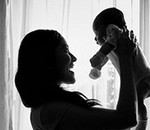

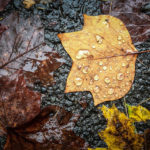
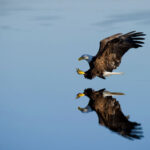
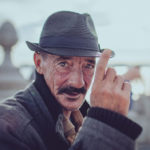
since storage space is never a concern now, you should always shoot RAW.
Great article you only forgot to say that you can go from raw to jpeg but you can’t go the other way.
There’s no concern about opening raw images in the future, at least not by anybody who knows what they’re talking about. Take a raw file from your camera, change the file extension to .tiff and try opening it in software which normally CAN’T open your cameras raw images and you’ll see what I’m talking about.
I’ve never had a client ask for anything other than tiff or occasionally the original raw file. jpg suffices solely for sending a quick proof before sale. As such, I shoot solely in raw, process the images and export them as a 16 bit layered tiff. Bottom layer the original untouched image and top layer the processed final work. You can add extra layers for a convenient versioning function if you want, another bonus.
I save those images on to a raid1 hard drive array, they automatically backup to a cloud service and I backup every finished shoot onto BluRay to be stored offsite. If that technology becomes obsolete, I’ll transfer it to a new system.
With modern computing hardware processing the images takes no time at all, it’s probably the shortest part of my whole workflow. The time it takes isn’t much of an excuse, just upgrade you computer or invest in some classes if the bottleneck is you ability with the computer.. The same with the hard drive space required to store the data, it’s only a lot if your priorities let it be.
Without wishing to sound nasty, if you can’t invest in the necessary tech to best support your ability perhaps it’s time to invest more time in improving your ability to the point where your income improves. In the relatively poor country I live in that took some effort but my standard of work, and prestige of clients, now reflects the effort put in
Really great topic. I never thought about the possability of propritory raw files not opening as we go out 10 years from now. I shoot wedding photography and shoot in Raw. Several times that has saved the shoot. I like to shoot fast and a lot of images. I’ve been shooting a long time and can get the shot but that takes time. Sometimes the spontanious moment is gone in 1-5 seconds. I hate re-inacting a moment. I love raw for that reason.
On the issue of:
– formats changing and software being outdated. Adobe has solved that problem by creating the free and open standard .dng.
– an extra step in workflow, wasting time. My images are not perfect “out of the box” It would take me a lot longer to correct my Uh-oh’s as jpg’s in Gimp than the few seconds it takes me to uFraw them first.
It’s “raw”, not “RAW” – it’s not an acronym, just a description of a file type.
This article is very confusing especially to those with no prior knowledge. Every digital camera has a digital RAW stage but some point and shoot cameras don’t offer the option to save it. Here is what happens inside your camera. The shutter opens and the sensor records the light it receives. If you can save that data, you get a RAW file. So this file is just exactly what the sensor recorded. Then your camera converts that data into an image file that is a JPG compressed version of the raw data. Now you have your picture or image. The only real good reason to save the RAW data is if the camera somehow messes up the conversion to JPG. This usually involves the white balance or the exposure. One common problem for me is the white sections of birds like an Osprey or a Great Blue Heron gets “blown out” by the camera guessing at the correct exposure! My solution is one that is good for DSLR shooters and that is to set your camera to RAW+JPG finest. This takes up a very large amount of space but it gives me the best of both worlds. If the JPG is good, I never do anything with the RAW data. However if whites are blown out or the white balance is off, I just open the RAW file and do the work of the computer by manually adjusting the exposure or white balance of the image and then exporting the better version to JPG! I usually still make a few fine tuning adjustments to the JPG file but at least I have a workable JPG to start from!!!
When I first started out, I always used JPG and I really regret that I don’t have the RAW data on a lot of those images because I had some great shots except the whites are blown. By not having the RAW data, I cannot “save” those images and must chalk them up to the learning process and move on.
Furthermore, I have needed to move up in my camera gear faster due to the large file sizes and the write speed of those files. When I first started out with a Canon XSi shooting burst mode was almost impossible with RAW+JPG writing to SD-HC memory cards. I have since moved up to a Canon 7D which uses CF cards and I buy the very fastest card I can get. Shooting in burst mode is no longer a problem.
So RAW is never needed UNTIL you really need it!!! This is why most professionals absolutely use RAW for must have images. Once you edit them into JPGs then you really can throw away the RAW file if you need space but with hard drives so cheap these days I keep mine. The argument that formats change and software may be out of date is really a false argument since I have the JGP saved as well. If I cannot read the RAW file because it is out of date, just means I cannot go back to square one and start over to re-edit the image.
I personally use both formats. I shoot in RAW when doing creative, artsy shots. When doing everyday photos of parties, games, etc. I use JPG.
Much like my old 4×5 is the way to go but as a working wedding photographer jpeg is all anyone want’s even the most expensive wedding’s I ex-plane the time and worth but they want DVD’s full of everything
and I never have complaints. It is the same from the 35mm vs medium format so….
I don’t see any mention of what is probably the most important difference between JPEG and Raw, which is pixel depth.
The compression done by JPEG is basically combining regions of adjacent pixels with similar luminance into blocks which removes high frequency changes from the image. The quality setting of JPEC compression affects how aggressively this combination is.
JPEG uses 8-bit pixels, a modern DSLR camera these days has a sensor range of 13-14 stops, since 1 stop represents a doubling of the exposure, this requires 13-14 bits per pixel. For most cameras the RAW file is close to what comes directly from the image sensor with very little processing.
That’s where the analogy with developing comes in. To produce a JPEG, the camera (or your computer) needs to process the raw sensor data and decide how to map that 13-14 bit range to 8-bits. Usually this is done by picking a sub-range of the values in the image. In the camera this development also fixes things like white balance. So shooting JPGs is like shooting only Polaroids in the old days. Even without compression of the 8-bit/pixel JPG there is a loss of information.
If you bring a RAW file into a program capable of editing it, say Aperture, Adobe Camera Raw, or one of the camera maker proprietary programs, you can see that most raw files have values outside of the histogram representing the 8-bit range of a JPEG. This is what allows the editor to adjust exposures, etc.
It’s also why you can produce an HDR photo from a single RAW file.
I know a photographer who shot an entire wedding on the wrong white balance in JPG. Every single picture had an orange cast that couldn’t be cleaned up. I know another one who shot a family portrait shoot in the smallest possible resolution. Both of these are professionals. To be it would be like shooting a wedding with an old family Polaroid camera. The only way for a professional to shoot is in RAW. I almost always get it right in camera but I still shoot RAW so to process takes me 3 minutes or less for a family shoot, less than 15 minutes for a wedding. But for those few times when I didn’t get it right, you’d never know.